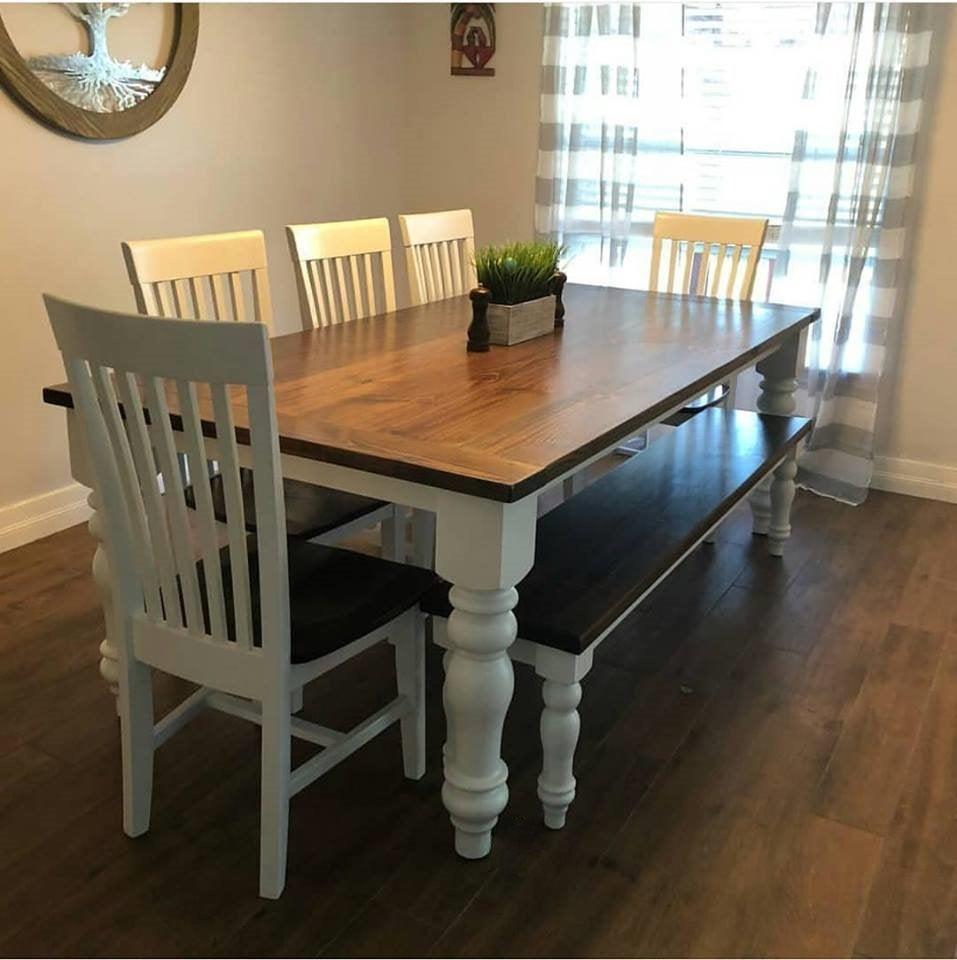How to Select the Perfect Dining Room Table Legs for Your Home Design
How to Select the Perfect Dining Room Table Legs for Your Home Design
Blog Article
An In-depth Check Out Table Leg Styles: Finding the Ideal Suit
Selecting the appropriate table leg design is essential for both aesthetic appeal and functional functionality. Standard 4 legs supply ageless beauty and stability, while the stand base offers increased legroom and a modern-day look. For those with bigger tables, trestle legs make sure sturdy assistance, whereas hairpin legs present a mid-century contemporary ambiance with their minimalist design. The x-shaped legs mix contemporary design with enhanced security. Each of these options brings special benefits, making the option greater than simply an issue of choice. Explore better to find which design completely complements your dining room and way of life.
Typical Four Legs
Among the various types of eating table leg designs, the standard four-leg style stays an ageless choice for many households. 4 legs supply balanced support, ensuring the table continues to be secure and qualified of bearing substantial weight (dining room table legs).
From a visual point of view, the conventional four-leg design can be conveniently adjusted to various indoor styles. Whether crafted from wood, steel, or a combination of materials, these legs can be delicately sculpted, sleek and minimalistic, or anything in between. Their versatility enables them to complement both rustic and contemporary setups perfectly.
Furthermore, the straightforward framework of the four-leg style facilitates convenience of motion and placement within an area. Unlike more facility bases, this style minimizes blockages, offering ample legroom for diners. In recap, the standard four-leg table leg design marries withstanding elegance with sensible functionality, making it a sharp choice for those looking for both form and feature in their dining furnishings.
Pedestal Base
Commonly celebrated for its sophisticated and space-efficient design, the pedestal base is a notable option to the typical four-leg setup in eating table leg styles. This unique base typically features a solitary central column sustaining the tabletop, which can vary in type, from ornately sculpted wood to smooth, modern-day metal. One of the key advantages of the pedestal base is its capability to optimize legroom and seating flexibility. Without corner legs, restaurants are managed greater flexibility of motion, making it a perfect option for round and oblong tables that advertise more intimate and inclusive events.
In addition, the stand base's main assistance can take care of substantial weight, permitting the use of heavier tabletops, such as marble or thick hardwood. This strength coupled with its aesthetic versatility makes the pedestal base a popular choice in both conventional and contemporary indoor settings. It can perfectly integrate with different style styles, from classic sophistication to minimal modernity. In addition, the main column itself uses a canvas for complex styles and imaginative expressions, including an aspect of visual interest beneath the table. In recap, the stand base combines functionality snappy, making it a fine-tuned and useful option for varied dining environments.
Trestle Legs
Trestle legs give a robust and classic foundation for eating tables, defined by their straight cross-bracing and strong assistance beam of lights. Originating from middle ages times, this style has actually advanced yet maintained its necessary structure, making it a seasonal favorite in both standard and contemporary settings. The main trestle beam, usually supported by 2 or more vertical blog posts, provides exceptional security, enabling larger table lengths without the demand for additional legs.
A considerable benefit of trestle leg tables is the sufficient legroom they use. look at here now Unlike tables with four corner legs, the lack of blockages at the table's edges offers unblocked space for chairs and diners, improving convenience and ease of access. This makes trestle tables suitable for accommodating larger events, whether in an eating space or a banquet hall.
From rustic farmhouse to smooth modern styles, trestle legs can be personalized to match individual tastes. Their long-lasting charm and useful advantages make trestle legs a compelling choice for those looking for both design and usefulness in their eating table.
Barrette Legs

The charm of barrette legs lies in their simplicity and convenience - dining room table legs. Available in a variety of products, including steel and brass, they can be finished in many shades to complement different interior designs. Whether coupled with a rustic wooden tabletop or a contemporary glass surface area, barrette legs easily blend functionality with a touch of vintage charm
Toughness is an additional remarkable feature of barrette legs. Regardless of their fragile look, these legs are engineered to bear considerable weight, making certain the table remains stable and protected. Furthermore, they are reasonably very easy to mount, making them a prominent choice for DIY enthusiasts and professional furniture makers alike.
X-Shaped Legs

Constructed from products such as steel, timber, or a combination of both, X-shaped legs can be customized to match various style choices. Steel legs frequently offer a sleek and industrial feeling, perfect for loft-style houses and modern-day eating spaces. On the other hand, wood X-shaped legs offer a warmer, much more rustic allure, ideal for farmhouse or eclectic interiors. The convenience in products allows house owners to tailor their eating tables to better fit their general style system.
Additionally, the design behind X-shaped legs makes certain also weight circulation, minimizing the risk of wobbling and enhancing sturdiness. This makes them especially appropriate for bigger eating tables that need extra support. Essentially, X-shaped legs blend useful engineering with contemporary looks, making them a classic selection for varied eating atmospheres.
Final Thought
A detailed understanding of dining table leg styles discloses the unique characteristics and advantages of each style. Trestle legs ensure durable support for bigger tables, and hairpin legs introduce a mid-century modern-day aesthetic.
Report this page